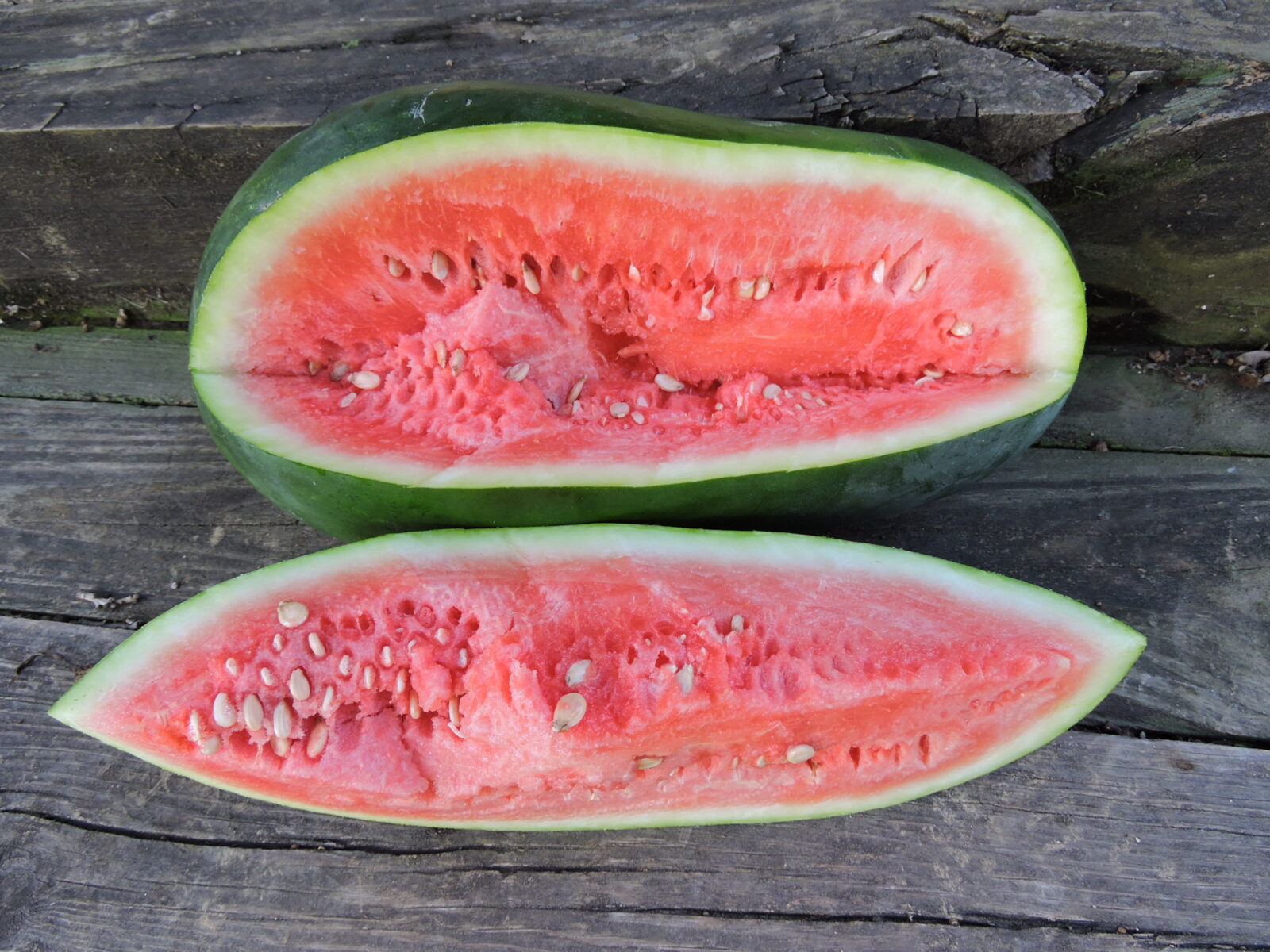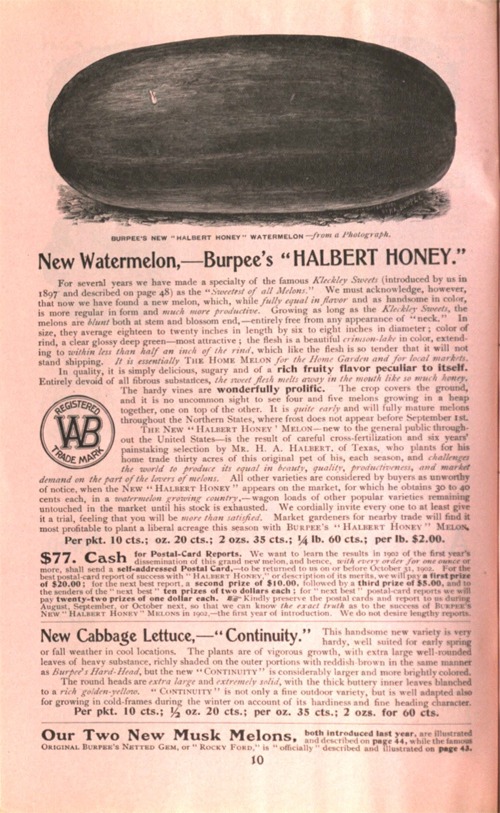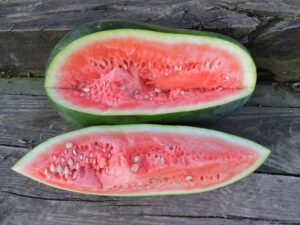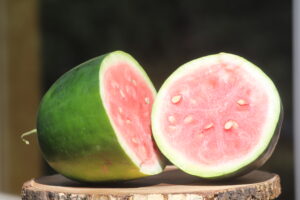Keep Exploring
When you make a purchase from Seed Savers Exchange, you help fulfill our nonprofit mission to protect our food and garden heritage. Do even more good by making a donation to help us preserve and share even more heirloom varieties!

The ‘Halbert Honey’ watermelon is dark green and elongated with tan-white tipped seeds, pink flesh, and a thin, somewhat delicate rind. Known a century ago as one of the best watermelon varieties on the market, ‘Halbert Honey’ has a sweet flavor with a crisp juicy texture.
Keep reading to learn the story behind ‘Halbert Honey’ and how this historic variety came to be at Seed Savers Exchange.
This historic variety of watermelon was developed by Mr. H.A. Halbert of Texas and introduced in 1902 by the W. Atlee Burpee seed house. That year, the Burpee catalog described it as “new to the general public” and as a selection by Mr. H. A. Halbert of Texas “who plants for his home trade thirty acres of this original pet of his, each season…”

Many seed houses promoted it as one of the best varieties for the home garden. Thirty years after its introduction, the Steckler Seed Co. of New Orleans still called it “one of the best tasting melons on the market, a favorite.”
Despite its Southern origin, ‘Halbert Honey’ is an early maturing watermelon and became popular with Northern gardeners. In a 1907 Report of Ontario Agricultural Stations, E.E. Adams, from the Essex Vegetable Station,wrote, “Halbert Honey watermelon is about the best for home use, while Kleckley Sweets are about equal to them. Peerless and Fordhook Early are also good early varieties”.
Unfortunately, this fine watermelon dropped out of the U.S. seed trade by 1987.
In 2013, former SSE curator Glenn Drowns of Sandhill Preservation Center reintroduced Halbert Honey. He obtained his version from long-time SSE member Virgil Johnson many years ago. We are pleased to join Glenn in the restoration of this historic variety.

SSE’s version of ‘Halbert Honey’ entered the Collection in 2012. We brought it in from the USDA (PI 635600) because SSE’s existing Halbert Honey variety did not match historic descriptions. An SSE member who requested our original ‘Halbert Honey’ from the Yearbook Exchange first alerted us to this problem in 2011.
USDA obtained their ‘Halbert Honey’ in 1961 from Seed Research Specialists. We have carefully compared this USDA version to historic descriptions and images of ‘Halbert Honey’, and we feel that it is an exact match.

Although this watermelon is not currently available through SSE’s commercial catalog, you can find our listing for ‘Halbert Honey’ on the Exchange, our free online gardener-to-gardener seed swap. Simply make a free account, and you will be able to request ‘Halbert Honey’ seeds and thousands of other varieties for only the cost of postage!
Like all watermelons, this is best eaten fresh. Serve chilled slices or cut it up into a salad with tomatoes and feta cheese.
Watermelon can be direct seeded into the soil after the last spring frost. You can also start plants indoors 4-6 weeks before the last frost date.
If you are direct seeding, plant in groups of 2-3 seeds and keep the healthiest plant that matures. Space your plants or seeds 12-18 inches apart and plant 1/2-1 in. deep.
Make sure that your soil is well fertilized as this crop is a heavy feeder and takes a lot of nutrients from the soil. Consider adding compost to the soil the year before you plant. Watermelon prefer sandy or light-textured soils.
These plants prefer warm weather and soil so they should be grown when temperatures are over 68 degrees F. You should avoid watering them from above as damp leaves may be susceptible to disease.
Learn How to Grow and Save Watermelon Seeds
Originally published December 22, 2015. Updated March 27, 2025.
Keep Exploring
When you make a purchase from Seed Savers Exchange, you help fulfill our nonprofit mission to protect our food and garden heritage. Do even more good by making a donation to help us preserve and share even more heirloom varieties!